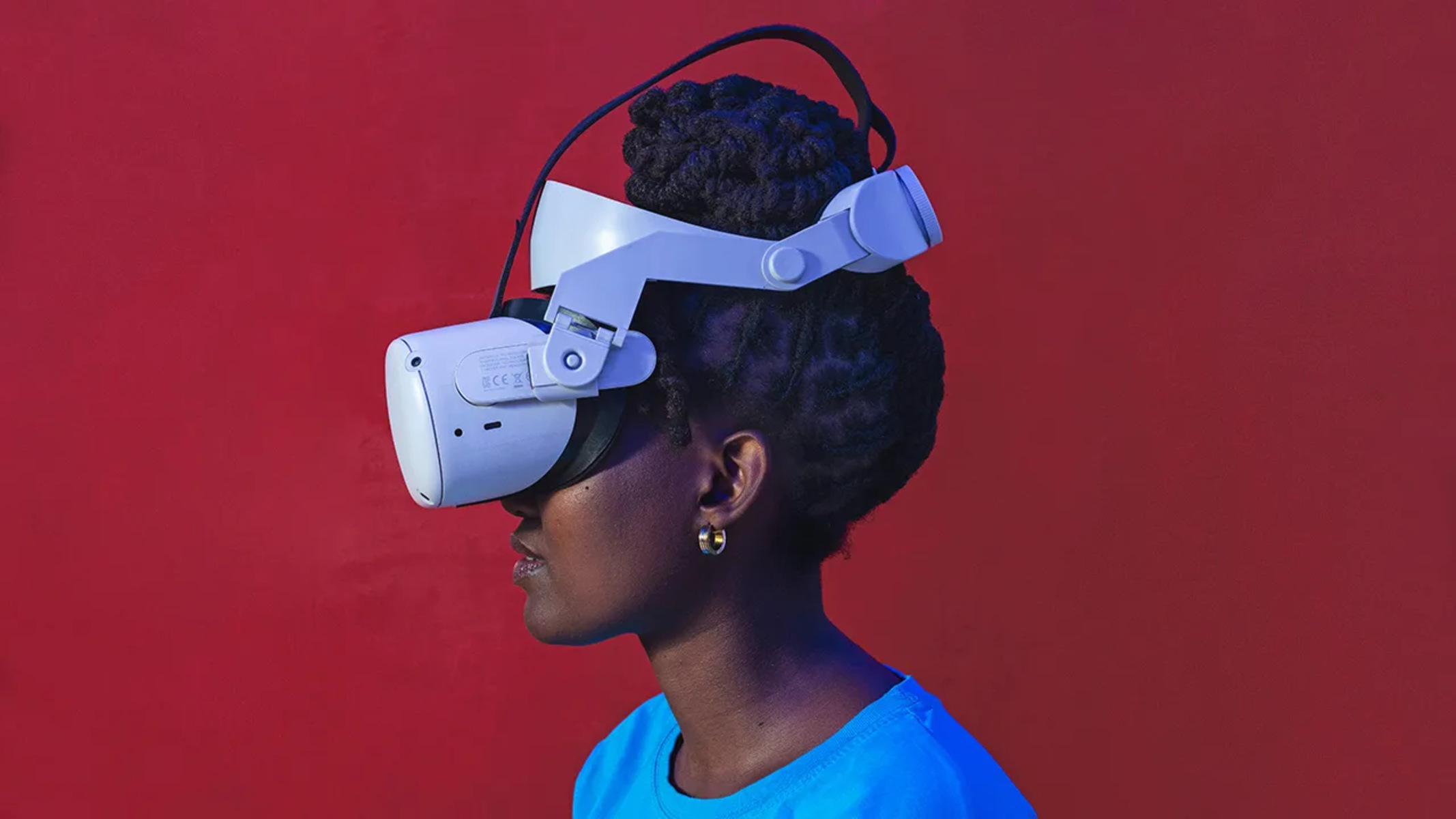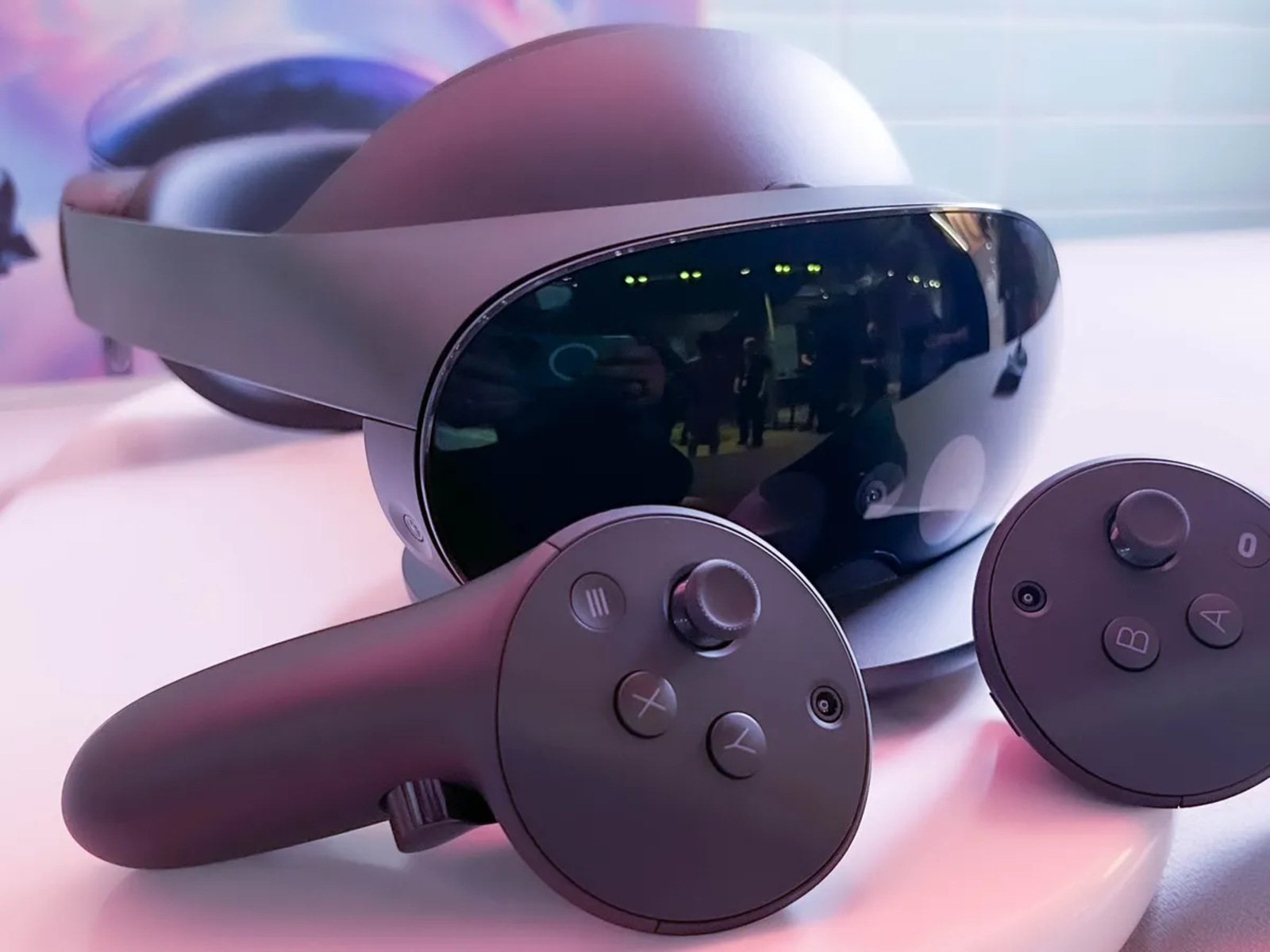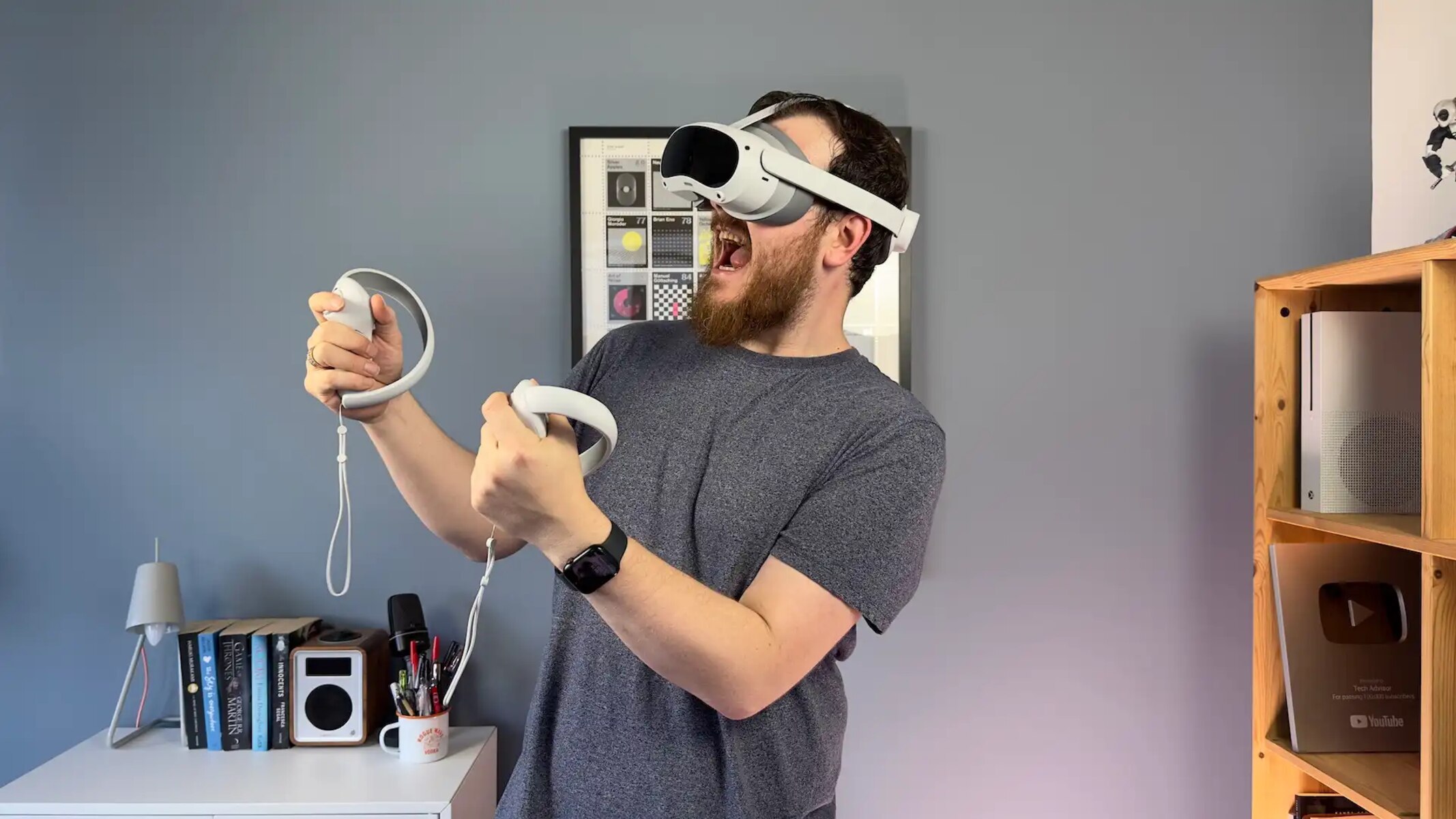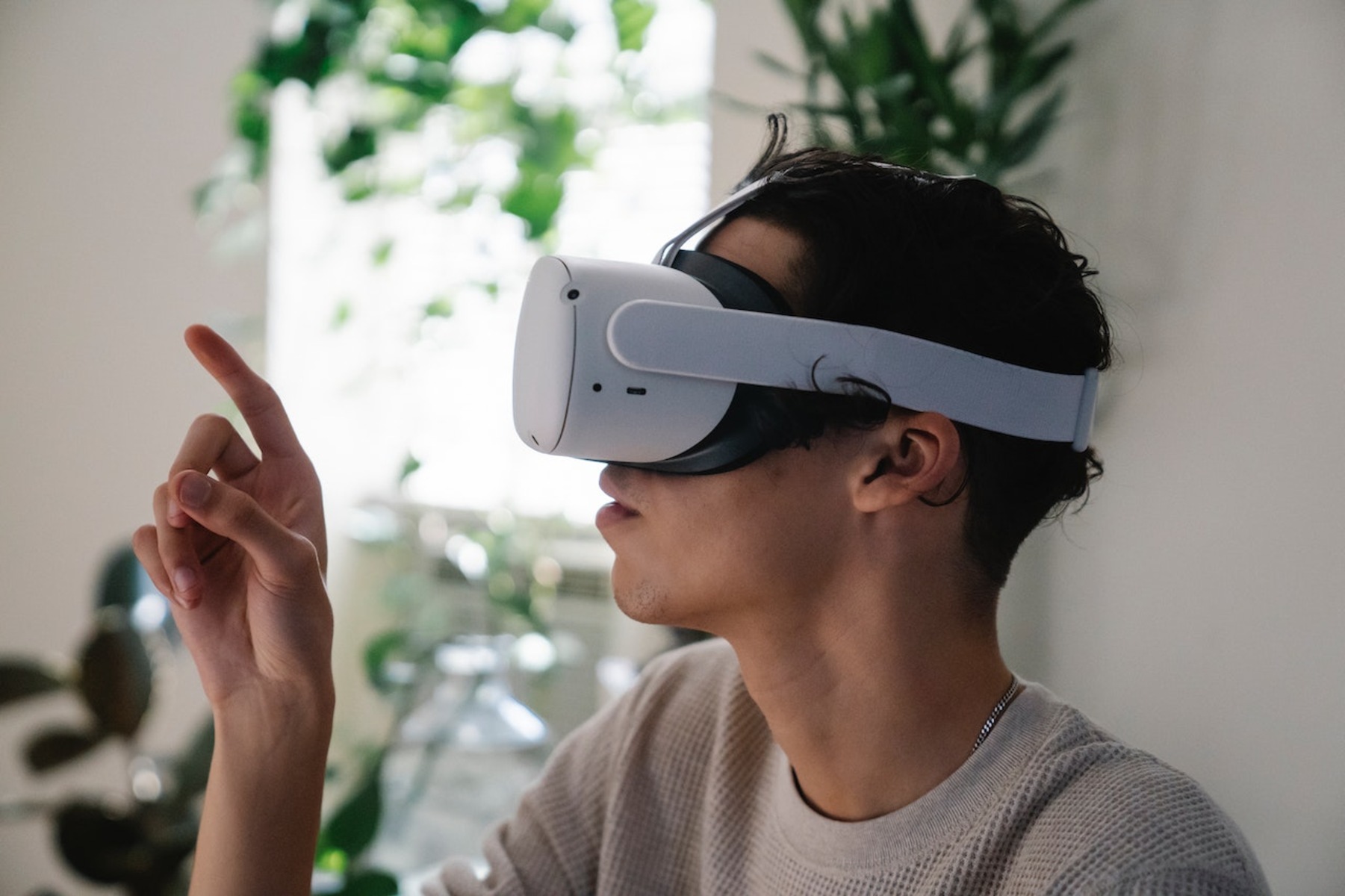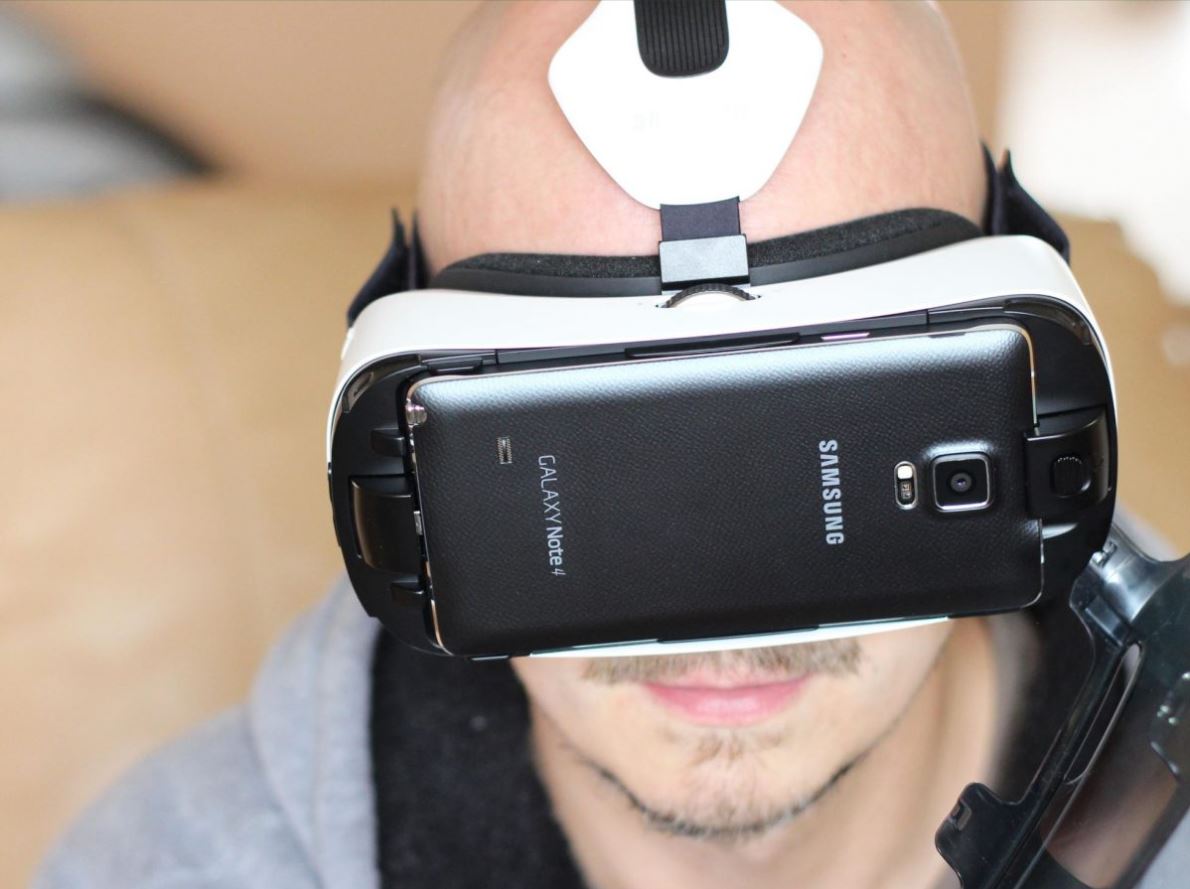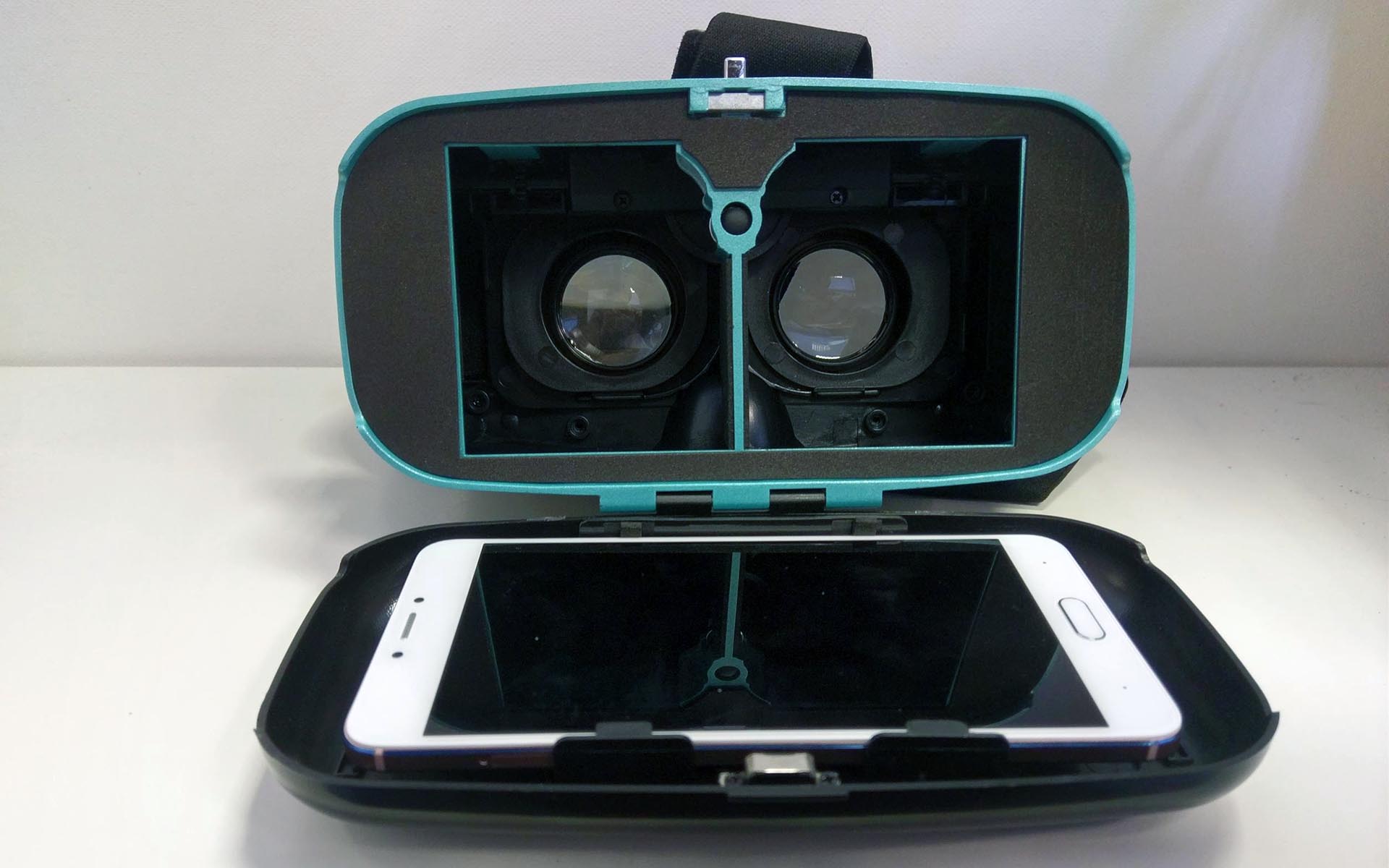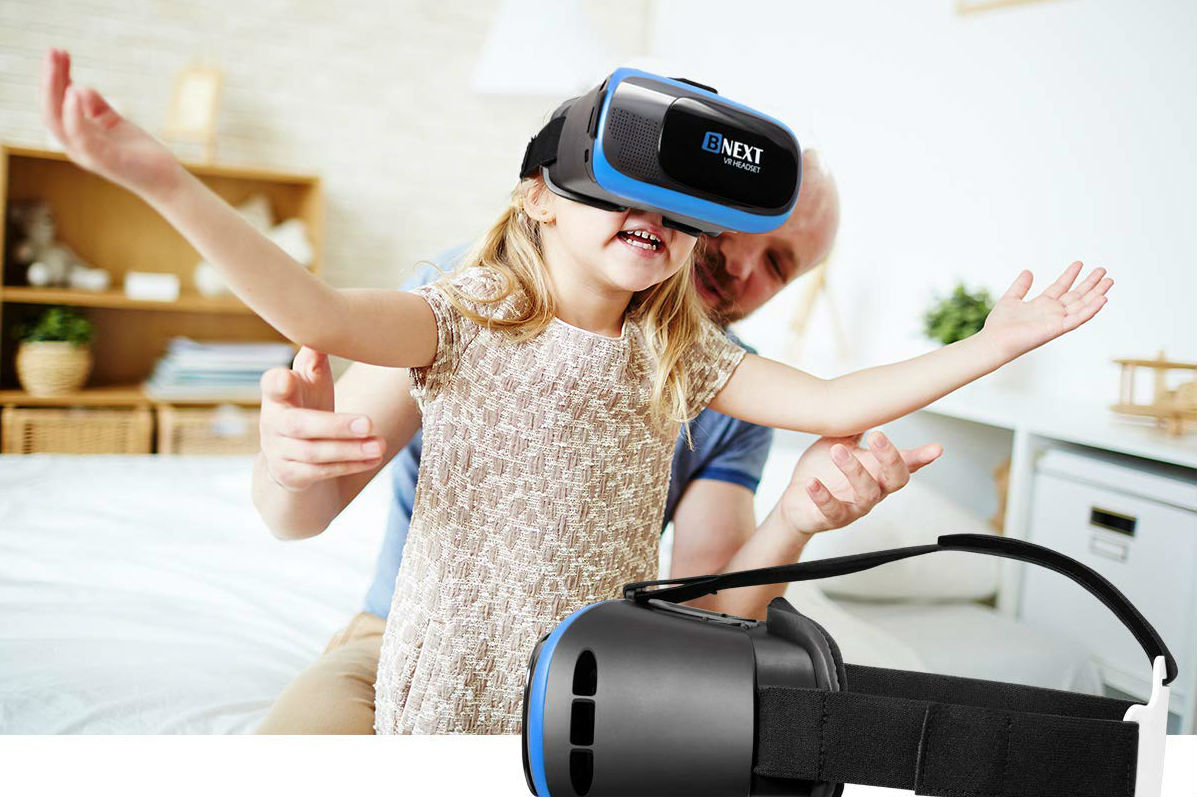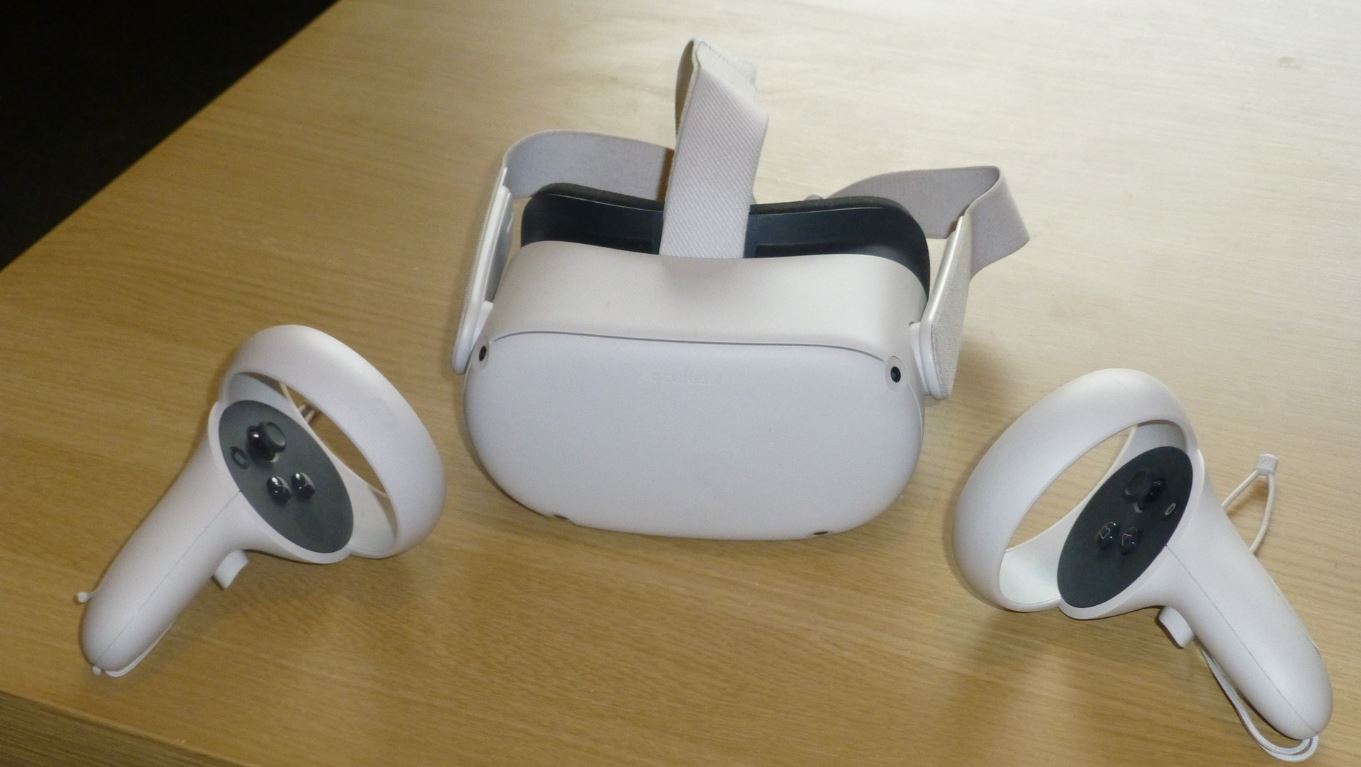Introduction
Welcome to the exciting world of virtual reality (VR)! With the rapid advancement of technology, VR headsets have become increasingly popular, offering immersive experiences that can transport you to incredible virtual landscapes and dynamic game environments. Whether you are a seasoned gamer or just curious about exploring new realms, a VR headset is a gateway to a whole new dimension of entertainment and exploration.
In this guide, we will walk you through the basics of using a VR headset, from setting it up to navigating the virtual environment and interacting with objects. We will also provide some tips on caring for your VR headset and troubleshooting common issues.
Before we dive in, it is important to note that VR technology is constantly evolving, and different headsets may have specific features and requirements. Therefore, it is essential to refer to the manufacturer’s instructions and guidelines for your specific headset model.
So, without further ado, let’s embark on this virtual reality journey and discover how to make the most of your VR headset!
Getting Started
Before you can dive into the world of virtual reality, there are a few essential steps you need to follow to get started with your VR headset. Let’s walk through these steps to ensure a smooth setup process.
1. Check Compatibility: The first thing you need to do is check if your VR headset is compatible with the device you want to use it with. Most VR headsets are designed to work with PCs, gaming consoles, or smartphones. Check the specifications and requirements provided by the manufacturer to ensure compatibility.
2. Download VR Software: Depending on the VR headset you have, there may be specific software or applications that need to be downloaded to your device. These software packages are crucial for running VR content and providing a seamless experience. Visit the manufacturer’s website or app store to download the required software.
3. Set Up Play Area: Before putting on the VR headset, you need to create a safe play area. Clear the space around you by removing any obstacles or fragile items. Some VR headsets, such as the Oculus Rift, may have a feature that allows you to define the play area and set boundaries to avoid collisions.
4. Clear Cables: Ensure that the cables of your VR headset are untangled and properly connected. This is crucial for a smooth and uninterrupted VR experience. Make sure the cables are not twisted or stretched, as it may result in poor performance or damage to the headset.
5. Clean the Lens: VR headset lenses can easily accumulate dust, fingerprints, or smudges, which can affect the visual quality. Use a microfiber cloth or lens cleaning solution recommended by the manufacturer to clean the lenses before putting on the headset. This will ensure a clear and immersive VR experience.
With these steps completed, you are now ready to put on your VR headset and delve into the virtual world. In the next sections, we will guide you through the process of adjusting the straps, connecting the headset to a device, and exploring the VR environment.
Setting up the VR Headset
Now that you have completed the initial steps, it’s time to set up your VR headset for an optimal and comfortable experience. Follow these instructions to ensure that your headset is properly adjusted and aligned.
1. Put on the Headset: Gently place the VR headset on your head, ensuring that it sits comfortably on your face. The lenses should align with your eyes, and the head strap should be positioned securely on the back of your head.
2. Adjust the Straps: Most VR headsets come with adjustable straps to ensure a snug fit. Start by loosening the straps, then tighten them gradually until the headset feels secure but not too tight. This will prevent any discomfort during prolonged use.
3. Position the Display: Adjust the position of the display within the headset to align it with your eyes. This is important for maintaining a clear and focused view. Use the adjustment knobs or sliders provided by the headset to achieve the desired position.
4. IPD Adjustment: Some VR headsets offer IPD (Interpupillary Distance) adjustment, which allows you to align the lenses with the distance between your eyes. Refer to the headset’s manual or settings to adjust the IPD sliders or knobs for optimal visual clarity.
5. Audio Setup: Depending on your VR headset, you may have built-in audio or the option to connect headphones for immersive sound. Make sure the audio is properly configured and adjusted for the best experience.
6. Controller Setup: If your VR headset comes with controllers, follow the manufacturer’s instructions to pair them with the headset. This will enable you to interact with the virtual environment and navigate menus or games.
By correctly setting up your VR headset, you are ensuring that it fits securely and comfortably, providing an immersive experience without any distractions. Take the time to adjust the straps, align the lenses, and configure the audio and controllers to tailor the headset to your individual needs.
Adjusting the Straps
One of the key factors in ensuring a comfortable and stable VR experience is properly adjusting the straps on your headset. The straps help to distribute the weight of the headset evenly, reducing pressure on your face and allowing for extended use without discomfort. Here’s a step-by-step guide on how to adjust the straps on your VR headset.
1. Loosen the Straps: Start by loosening all the straps on your VR headset. This will make it easier to put on and adjust the fit later on.
2. Put on the Headset: Gently place the VR headset on your head, positioning it so that the lenses are aligned with your eyes. Ensure that the straps are positioned at the back of your head.
3. Adjust the Top Strap: Begin by adjusting the top strap of the headset. This strap helps to secure the headset in place and provides stability. Tighten it enough so that the headset stays firmly in position, but not so tight that it causes discomfort or pressure on your head.
4. Adjust the Side Straps: Next, adjust the side straps of the headset. These straps help to distribute the weight evenly and prevent the headset from sliding or shifting during use. Gradually tighten the side straps, ensuring a secure fit without placing excessive pressure on your face.
5. Test the Fit: Once you have adjusted the straps, test the fit by moving your head in different directions. The headset should remain in place without wobbling or sliding. If you feel any discomfort or pressure points, readjust the straps until you find a comfortable and secure fit.
6. Regularly Check the Straps: It is important to periodically check the straps of your VR headset, especially if you share it with others or if you frequently wear glasses. Adjust the straps as needed to maintain a proper fit and ensure a comfortable experience.
Remember, the goal is to find a balance between a secure fit and comfort. The straps should hold the headset in place without causing any discomfort or leaving marks on your face. Spend some time experimenting and adjusting the straps until you find the ideal fit for your VR headset.
Connecting to a Device
Before you can dive into the virtual world, it is essential to connect your VR headset to a compatible device. The process may vary depending on the type of VR headset you have, so refer to the manufacturer’s instructions for specific guidance. However, here are some general steps to follow when connecting your VR headset to a device:
1. Check the Connection Ports: Identify the appropriate ports on your VR headset and the device you want to connect it to. Common connection options include HDMI, USB, or a wireless connection. Make sure your device has the necessary ports and cables to establish a stable connection.
2. Connect the Cables: Plug in the required cables from your VR headset to the corresponding ports on your device. Ensure a secure connection by firmly inserting the cables into the ports. This step is crucial for transmitting audio, video, and tracking information between the device and headset.
3. Set up Wireless Connection (If Applicable): If your VR headset supports wireless connectivity, follow the manufacturer’s instructions to connect it to a wireless network. Enable the wireless mode on the device and ensure that both the headset and the device are connected to the same network for seamless communication.
4. Power on the Devices: Once the cables are connected and wireless settings are configured, power on your VR headset and the connected device. Some headsets have a power button or a dedicated power switch, while others automatically power on when connected to a device. Refer to your headset’s manual for specific instructions.
5. Pair the Headset and Controllers (If Applicable): If your VR headset comes with controllers, follow the manufacturer’s guidelines to pair them with the headset. This process may involve holding down specific buttons or using Bluetooth connectivity. Once paired, ensure the controllers are functioning correctly within the VR environment.
6. Configure Display Settings: Depending on the VR headset and the device you are using, you may need to adjust the display settings. This includes resolution, refresh rate, and other visual settings. Refer to the device’s settings or the VR software for instructions on optimizing the display for the best VR experience.
By following these steps, you can successfully connect your VR headset to a compatible device and begin enjoying the immersive virtual reality experience it offers. Remember to consult the specific instructions provided by the headset manufacturer for accurate and detailed guidance.
Navigating the VR Environment
Once your VR headset is connected and set up, it’s time to explore the virtual environment. Navigating the VR world may initially seem daunting, but with a little practice, it will become second nature. Here are some tips to help you navigate and move around in the VR environment:
1. Head Movement: Your head movement is a crucial element of navigating in VR. By turning your head in different directions, you can change your view and look around the virtual world. Take the time to familiarize yourself with the range of head movements supported by your VR headset.
2. Teleportation: Many VR experiences and games utilize a teleportation system to move around. This involves pointing a controller or using a designated button to teleport to a different location within the virtual space. Pay attention to on-screen prompts or controller instructions to teleport and explore new areas.
3. Smooth Movement: Some VR experiences allow for smooth movement within the virtual environment. This can be done by using the controller’s analog stick or touchpad to walk or move in any desired direction. Ensure that you have enough space and clear any obstacles to avoid any accidents while moving in the VR world.
4. Menu Navigation: VR applications and games often have menus or interfaces that allow you to access different options, settings, or game features. These menus can usually be navigated using either your head movements, controller inputs, or a combination of both. Take your time to explore and understand how to navigate the menus efficiently.
5. Interact with Objects: In the VR world, you can interact with virtual objects using the controllers or other tracking devices. Pay attention to the on-screen prompts or cues to grab, manipulate, or interact with objects within the virtual environment. Experiment with different gestures and actions to fully immerse yourself in the interactive experience.
6. Follow Game or Application Guidelines: Each VR experience or game may have its unique controls, movement mechanics, and guidelines. It is crucial to pay attention to any tutorial or instruction provided by the game or application to understand how to navigate and interact in the specific VR environment.
Remember, navigating in VR requires a bit of practice and getting accustomed to the unique mechanics. Take your time, explore different experiences, and gradually build your comfort and familiarity with movement in the virtual world. Soon, you’ll be effortlessly exploring new realms and interacting with the virtual environment like a pro.
Using the Controllers
The controllers play a crucial role in enhancing your interaction and immersion in the virtual reality (VR) environment. They allow you to navigate, manipulate objects, and perform actions within VR applications and games. Here’s a guide on how to make the most of your VR controllers:
1. Familiarize Yourself with the Buttons: Start by familiarizing yourself with the buttons and controls on your VR controllers. Each controller may have a different layout, so consult the manufacturer’s instructions or in-app tutorials to understand the functions of each button.
2. Grip and Trigger Buttons: The grip buttons, usually located on the sides of the controller, allow you to grab and hold objects. The trigger buttons, typically positioned under your index or middle finger, facilitate actions like shooting, grabbing, or activating specific features within VR experiences.
3. Explore Controllers’ Tracking Capabilities: Many VR systems use tracking technology to detect the position and orientation of the controllers. Take advantage of this by utilizing natural hand movements and gestures. This adds a realistic touch to your virtual interactions and enhances your immersive experience.
4. Follow In-App Tutorials: VR applications and games often provide tutorials or pop-up guides to teach you how to use the controllers effectively. Pay attention to these instructions to understand the specific interactions and actions required in each experience. This will help you get the most out of the controller’s capabilities.
5. Practice Hand-Eye Coordination: Using the controllers effectively in VR requires good hand-eye coordination. Practice aiming, grabbing objects, and executing precise movements to enhance your accuracy and control. Regular practice will improve your proficiency over time.
6. Customize Controller Settings (If Available): Some VR systems offer customization options for controller settings. Explore the settings menu to adjust sensitivity, button mapping, or other preferences to suit your personal preferences and playstyle.
7. Explore Different Interaction Techniques: VR applications and games often employ various interaction techniques to enhance immersion. These may include throwing objects, using two hands to manipulate larger objects, or performing specific gestures to trigger actions. Experiment with these techniques to fully engage with the virtual environment.
Remember, becoming proficient with the VR controllers takes practice and patience. The more you familiarize yourself with their functionalities and practice using them, the more natural and intuitive your virtual interactions will become. Explore different VR experiences and games to discover the wide range of possibilities they offer for controller-based interactions.
Interacting with Objects
One of the most exciting aspects of virtual reality (VR) is the ability to interact with virtual objects in a realistic and immersive way. Whether you’re picking up a virtual item, solving puzzles, or manipulating objects, here are some tips to help you make the most of your object interactions in the VR environment:
1. Grabbing and Releasing: To pick up objects in VR, use the designated grip buttons on your controller. Press and hold the grip button to grab an object, and release it to let go. Pay attention to the feedback provided by the VR environment to ensure a successful interaction.
2. Throwing and Tossing: Some VR experiences allow you to throw or toss objects. Practice your throwing technique by following the natural motion of your arm, and release the grip button at the desired moment to launch the object. Experiment with different throwing motions and forces to simulate realistic object movements.
3. Two-Handed Interactions: In certain VR applications or games, you may come across larger objects that require two hands to manipulate. Use both controllers simultaneously to interact with these objects, mimicking real-life actions. This adds to the immersion and provides a more realistic and engaging experience.
4. Manipulating and Rotating: Some VR objects can be rotated or manipulated in various ways. Use the controller’s joysticks or touchpads to rotate or move objects within the virtual environment. Pay attention to the object’s orientation and the desired interaction mechanics specified by the VR application or game.
5. Solving Puzzles and Challenges: Many VR experiences incorporate puzzles or challenges that require object interactions to progress. Pay close attention to the clues and hints provided in the VR environment. Manipulate objects, inspect them closely, and experiment with different interactions to solve the puzzles and overcome obstacles.
6. Pay Attention to Physics: VR environments often aim to simulate realistic physics interactions. Experiment with different objects and observe how they react to your interactions. Drop objects to observe their fall, collide objects to witness their realistic responses, and take advantage of physics-based interactions to enhance your overall experience.
7. Try New Interaction Techniques: Different VR experiences may introduce unique interaction techniques. These can include gestures, specific button combinations, or even voice commands. Explore these techniques to fully immerse yourself in the VR environment and discover new and exciting ways to interact with objects.
Remember, each VR experience may have its own specific object interaction mechanics. Take the time to understand and adapt to each virtual environment you explore. By experimenting with different object interactions and incorporating natural movements, you can enhance your immersion and fully enjoy the exciting possibilities of interacting with objects in the VR world.
Exploring VR Applications and Games
Virtual reality (VR) opens up a whole new world of immersive experiences, from games to educational simulations and creative applications. Here are some tips to help you make the most of your exploration and discover exciting VR applications and games:
1. Browse VR Platforms: Start by exploring VR platforms and marketplaces, such as SteamVR, Oculus Store, or PlayStation VR. These platforms offer a wide range of VR applications and games, allowing you to browse and discover new experiences based on your interests.
2. Read Reviews and Recommendations: Before purchasing or downloading a VR application or game, take the time to read reviews and listen to recommendations from other users. Consider factors such as gameplay, graphics, storylines, and user experiences to find options that align with your preferences.
3. Explore Different Genres: VR offers a diverse range of genres, including action, adventure, puzzle, simulation, and more. Explore different genres to find the type of experience that captivates you. Don’t be afraid to venture outside your comfort zone and try new things.
4. Take Advantage of Demos and Free Experiences: Many VR applications and games offer demos or free experiences that allow you to try them before committing to a purchase. Take advantage of these opportunities to get a taste of the gameplay, mechanics, and overall experience of a VR application or game.
5. Follow VR Gaming Communities and Channels: Join online VR gaming communities or follow VR gaming channels to stay informed about the latest releases, updates, and trends in the VR world. These communities provide a platform for discussions, recommendations, and sharing experiences with fellow VR enthusiasts.
6. Experiment with Interactions and Mechanics: When exploring VR applications and games, take the time to experiment with different interaction mechanics and gestures. VR offers unique opportunities for immersive interactions, so don’t be afraid to try unconventional actions and gestures to fully engage with the virtual environment.
7. Set Comfort and Safety Preferences: VR experiences can be intense and may vary in terms of comfort levels for different individuals. Take advantage of options available in the VR settings to adjust comfort and safety preferences. This can include options like teleportation movement, turning comfort features on or off, or adjusting the field of view.
8. Support Independent Developers: The VR community is home to many passionate independent developers. Explore and support their creations, as they often bring unique and innovative experiences to the VR gaming landscape. Look out for hidden gems and experimental titles that may offer a fresh perspective in VR.
Remember, exploring VR applications and games is a personal journey. Enjoy the process of discovering new experiences, experimenting with different interactions, and immersing yourself in the incredible possibilities that VR has to offer. With such a vast and exciting realm to explore, there’s always something new and thrilling waiting to be discovered in the world of virtual reality.
Caring for Your VR Headset
Your VR headset is a valuable piece of technology that requires proper care and maintenance to ensure its longevity and optimal performance. Here are some essential tips to help you take care of your VR headset:
1. Clean the lenses: The lenses of your VR headset can easily accumulate smudges, fingerprints, or dust, impacting the visual quality. Use a microfiber cloth recommended by the manufacturer to gently clean the lenses. Avoid using harsh cleaners, sprays, or rough materials that could scratch or damage the lenses.
2. Wipe down the headset: Regularly wipe down the exterior of your VR headset with a soft, lint-free cloth to remove any dirt, sweat, or skin oils that may have accumulated. Pay extra attention to the areas that come into contact with your face, such as the foam padding or silicone inserts, as these can harbor bacteria over time.
3. Store in a clean and dry place: When not in use, store your VR headset in a clean, dry place to protect it from dust, humidity, and potential damage. Consider using a dedicated carrying case or protective cover to prevent scratches and ensure the headset is safely stored.
4. Avoid excessive heat and sunlight: Extended exposure to direct sunlight or extreme temperatures can damage the components of your VR headset. Avoid leaving it in a hot car or in direct sunlight for prolonged periods. Store it in a cool, well-ventilated area when not in use.
5. Be mindful of cable management: Take care when managing the cables of your VR headset. Avoid twisting or bending them excessively to prevent damage and ensure uninterrupted functionality. Consider using cable management accessories or hooks to keep the cables organized and prevent tangles.
6. Protect the lenses during transport: If you need to transport your VR headset, take precautions to protect the lenses. Use lens covers, microfiber pouches, or dedicated protective cases to prevent scratches or damage while on the move.
7. Follow manufacturer’s maintenance guidelines: Refer to the manufacturer’s guidelines and instructions for any specific care and maintenance recommendations. They may provide additional tips or precautions tailored to your specific VR headset model.
By following these care tips, you can ensure that your VR headset remains in excellent condition for a longer period, providing you with continued immersive experiences. Taking the time to maintain your headset will not only extend its lifespan but also contribute to a consistently high-quality VR experience.
Troubleshooting Tips
While using your VR headset, you may encounter occasional issues or glitches. Here are some troubleshooting tips to help you resolve common problems and ensure a smooth VR experience:
1. Check the connections: If your VR headset is not functioning properly, double-check all the cables and connections. Ensure that they are securely plugged into the correct ports on both the headset and the device that it’s connected to.
2. Restart the headset and device: Sometimes, a simple restart can fix minor software or connectivity issues. Power off your VR headset and the connected device completely, wait for a few seconds, and then power them back on.
3. Update firmware and drivers: Regularly check for firmware updates or driver updates for your VR headset and the device it’s connected to. Keeping them up to date can help resolve compatibility issues and improve overall performance.
4. Clear obstructions and obstacles: Make sure your play area and the space around you are clear of any obstructions or objects that may interfere with the tracking or safety features of your VR headset. Remove any potential hazards to ensure a safe and seamless VR experience.
5. Adjust lighting conditions: Bright or direct lighting can sometimes affect the tracking performance of your VR headset. Experiment with different lighting conditions, ensuring that the room is well-lit but without intense light sources directly facing the headset’s sensors.
6. Calibrate the sensors: Some VR headsets have sensors that require calibration to ensure accurate tracking. Follow the manufacturer’s instructions to calibrate the sensors and optimize the tracking capabilities of your VR headset.
7. Reinstall VR software or applications: If you’re experiencing persistent issues with a specific VR application or game, try reinstalling it. This can fix any corrupted files or software conflicts that may be causing the problem.
8. Check system requirements: Ensure that your device meets the system requirements specified by the VR headset and the applications you’re using. Insufficient hardware specifications may cause performance issues or prevent certain experiences from running smoothly.
9. Reset headset settings: If you’ve encountered unexplained issues or changes in your VR headset’s settings, consider performing a factory reset or restoring default settings. Consult the manufacturer’s instructions for guidance on how to reset your specific headset model.
10. Contact customer support: If you’ve exhausted all troubleshooting options and are still experiencing issues with your VR headset, reach out to the manufacturer’s customer support. They can provide further assistance and guide you through more advanced troubleshooting steps.
By following these troubleshooting tips, you can effectively address common issues and enjoy a smoother, more enjoyable VR experience. Remember, patience and persistence are key when it comes to troubleshooting, so don’t hesitate to seek assistance if needed.
Conclusion
Congratulations on completing this guide to using a VR headset! You now have a solid understanding of how to set up and adjust your VR headset, connect it to a device, navigate the VR environment, interact with objects, explore applications and games, care for your headset, and troubleshoot common issues.
VR technology has opened up endless possibilities for immersive entertainment, education, and exploration. With each passing day, the VR landscape continues to expand, offering new and exciting experiences for users to enjoy.
As you embark on your VR journey, remember to explore different genres and experiences, try out new interactions, and connect with the vibrant VR community. Keep up with the latest developments, updates, and releases to stay at the forefront of this ever-evolving technology. With practice and experimentation, you’ll unlock the full potential of your VR headset and immerse yourself in rich, captivating virtual worlds.
Remember, the key to a successful VR experience is finding a balance between comfort, enjoyment, and safety. Take breaks when needed, follow recommended guidelines and warnings, and always prioritize your well-being during VR sessions.
Now it’s time to put your knowledge into action and start exploring the vast realms of virtual reality. Whether you’re gaming, learning, creating, or simply exploring, the possibilities are limitless. So, grab your VR headset, prepare for an adventure, and let the immersive wonders of virtual reality take you to new heights!







